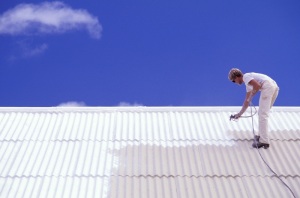Know the Difference Between Oil-Based and Water-Based Roof Paint
Some people are faced with a tough decision when putting roof paint—should they use oil-based or water-based paint?
Each type of paint has its own characteristics and functionality. Let us examine what each one does to help in our choices.
Oil-Based Paint
Oil-based paints or oil paints have alkyd or petroleum base as part of their components. Generally, oil paints take longer to dry than water-based paints or water paints. They also require turpentine or mineral spirits to clean the brushes or paint.
An easy way to detect an oil paint is the odor it emits. Unlike water paint, oil paint gives strong odor and fumes. A good ventilation is in fact recommended when working in an enclosed space using oil paint.
Oil paints are durable, making them ideal for painting objects that require more durable finish such as cabinets and furniture.
Since oil paints dry much slower than water paints, you have to allocate more time in your painting session to ensure each section or portion dries properly. This means no painting work when the weather is not cooperating or when rain is imminent.
Water-Based Paint
Identifying a water paint is relatively easy. The can or container should usually state that the paint is water based. Some water paints are called latex or acrylic. In the absence of any mark, just look at the instructions on the label on how to clean the roller or brush. If they say you can clean them with water and soap, then the paint is water based.
Compared to oil paints, water paint dries much faster and emits less odor and fumes. People prefer water paints for their very minimal odor when doing painting jobs in rooms, attics or other contained spaces.
Water paint is more eco-friendly than oil paint. With more people using water paints because of advances in technology that improve their quality, we will be relying less on oil-based materials and paints.
For those who need to work slowly while using water paints, additives are available that can be mixed with water paints to make them dry slower. Painting becomes easier with the use of these additives, which may be latex extender, floetrol or even ordinary water.
So when do we use water paint instead of oil paint? A good rule of thumb would be to use water paint unless a special reason or circumstance exists to warrant the use of an oil paint.
